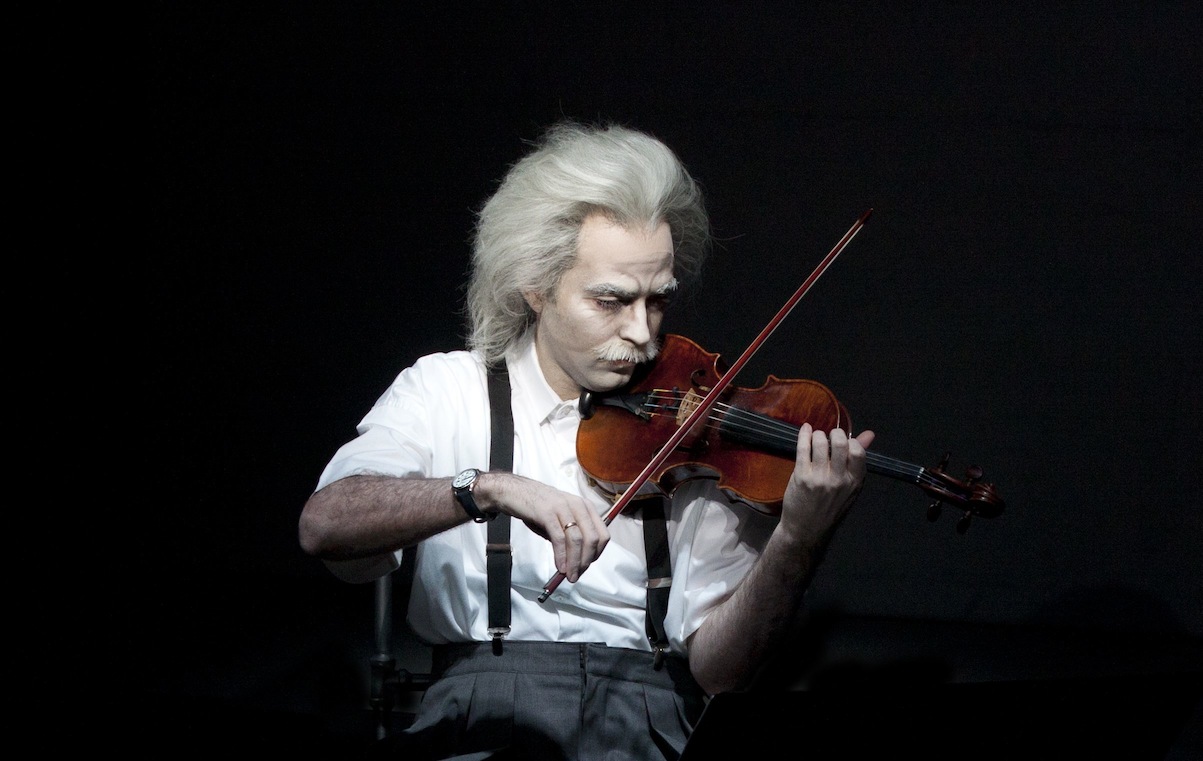Glass’s epic “Einstein” remains an opera for our time at BAM
Like a comet that only passes earth once every 20 years, Einstein on the Beach has returned to the Brooklyn Academy of Music. This new touring production of Philip Glass and Robert Wilson’s collaboration—presented as part of the BAM NextWave Festival—keeps the opera’s anarchic spirit intact while still packing an impressive theatrical wallop.
Einstein is an elaborate four-and-one-half-hour meditation on both nuclear annihilation and the life of the late physicist. It tore up the rulebook for opera composition and staging, eliminating dialogue, intermissions and offering just one wordless aria. There is no libretto to speak of, except for a series of cryptic drawings by Wilson that are almost epigrammatic artworks in themselves.
Thursday night’s performance at the Howard Gilman Opera House was anchored by the two actresses who featured in the “Knee Plays” and “Trial” scenes, Helga Davis and Kate Moran. They were already onstage at the start of the show, sitting at desks, making mysterious hand gestures and speaking text into microphones. There was something calming and meditative about these voices, a soothing quality that prepared the mind for the marathon to come. When the chorus, peeking out of the BAM orchestra pit started chanting “one, two, three, four…” the listener’s initiation into the complex rituals of Einstein had begun.
Many Einstein scenes are set to loud, repeated ostinatos for orchestral and keyboard instruments. These give way to the “Trial”scenes, where a judge presides over a bizarre dream court in Einstein’s laboratory, as a violinist (Antoine Silverman, dressed as Einstein) plays repeated arpeggios while seated between the orchestra and the stage.
Certain scenes resonated in the memory: the Trial with its forty repetitions of a phrase starting with Moran’s “I was in a prematurely air-conditioned supermarket”; the gorgeous duet (sung by Lisa Bielawa and Philip Anderson) on the rear of a disappearing train in Act II; Bielawa’s long Act IV aria, accompanying the elevation of the “bed”
into a vertical line, a rocket pointing straight at the sky that could be a symbol of exploration or nuclear doom. The whole is bracketed by the five “Knee Plays,” performed on a separate area on stage left, that provide humor, solace in and the final scene, redemption.
For this revival, Michael Riesman and the Pihilip Glass Ensemble were in top form, crafting sharp-edged slabs of sound that stayed with the listener through the vast expanse of the opera. At the evening’s climax, “Space Machine (Interior)”, they became part of the show, playing their keyboards and wind instruments onstage as the energy buildup of a nuclear explosion accelerated around them.
Inevitably, Einstein can still be a long haul. The ostinatos grate after a while, and the endless solos for saxophone, organ and the title character outstay their welcome. However, as the opera gains momentum in its final act and the bomb (literally) drops during the climax of of the final scene, the beauty and brilliance of this piece reveals itself. With its last Knee Play, Einstein becomes a plea for peace and love in the face of overwhelming annihilation. 33 years later, it is still an opera for our times.
Einstein on the Beach continues at Brooklyn Academy of Music through September 23. The show will then move to the University of California at Berkely Oct. 26-28 before commencing an international tour. bam.org
Paul Pelkonen is a freelance writer and the author of Superconductor, a classical music and opera blog.

